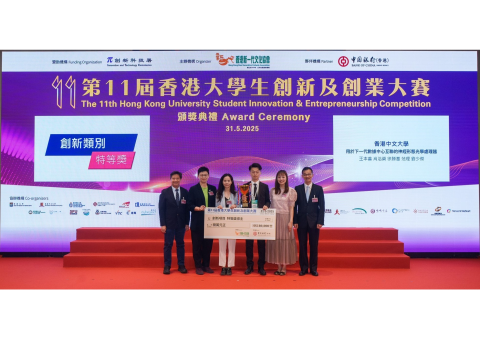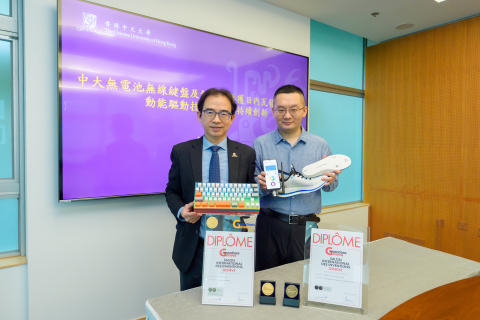Students supervising by Professor Huang Chaoran from the Department of Electronic Engineering achieved outstanding results at the “11th Hong Kong University Student Innovation and Entrepreneurship Competition”. The team has won the Innovation grand prize and first prize (Information Technology) for the project on Next Generation Data Center Interconnects with Integrated Neuromorphic Photonic Processor. Innovation grand prize and first prize (Information Technology): Next Generation Data Centre Interconnects with Integrated Neuromorphic Photonic Processor Large-scale artificial intelligence (AI) training requires uniformly ultra-low latency and energy-efficient data interconnects to let massive graphics processing units (GPUs) function as a unified system. However, current technologies often struggle with delays and high energy use, limiting AI development. Under the supervision of Professor Huang Chaoran from the Department of Electronic Engineering, a project team comprising Wang Benshan, Xiao Qiarong, Xu Tengji, Fan Li and Liu Shaojie presented a new type of data connection that uses light instead of electricity to transmit information. This system is the first in the world to operate entirely with light, eliminating the need for traditional electronic parts that usually slow things down. Their invention is over 10,000 times faster and uses 1,000 times less energy than current methods. It can also send data over much longer distances—up to 80 km—compared to just 2 km with existing technology. This means it could connect millions of GPUs with near-zero latency, which reducing hardware costs and energy consumption, providing comprehensive and robust support for future AI development. About Hong Kong University Student Innovation and Entrepreneurship Competition The Hong Kong University Student Innovation and Entrepreneurship Competition is organised annually by the Hong Kong New Generation Cultural Association. Winning projects will represent Hong Kong Special Administrative Region in national competitions, including the “Challenge Cup” National College Students’ Extracurricular Academic Science and Technology Contest, the “Challenge Cup” China College Students’ Entrepreneurship Competition and the China International College Students’ Innovation Competition. This year, the winning projects will also have the opportunity to represent Hong Kong and their respective institutions at international competitions and exhibitions. |
|











